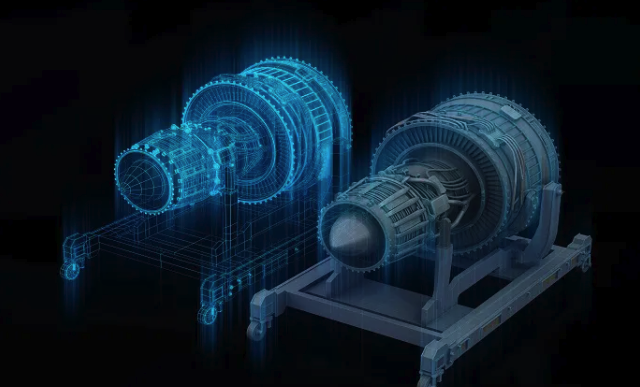Beacons in the Internet of Things
Have you ever walked through a store and noticed your mobile phone lighting up with tempting suggestions to try on those shoes that just happen to be on sale? Surprise, you just got pinged by a beacon! Beacons are becoming increasingly mainstream along with the growth of the Internet of Things (IoT).
Beacons are small devices that detect fine-tuned proximity within any beacon-enabled device, and they’re helping to make IoT applications work together harmoniously in the ecosystem of smart things. While the retail space has proven to be a good launch pad for beacon technology, in the long term this kind of technology-based engagement will drive consumers to use more modern, dynamic web applications, with push-notification capabilities driven by proximity technology. With beacon protocols (such as Apple’s iBeacon and Google’s Eddystone), developers can leverage a new technique to enhance their overall app experience, and discover new ways to influence how people interact with their surroundings.
Beacons in Action
Beacons pack huge potential in tiny packages. Beacon technology is becoming more commonplace in peoples’ daily lives, with various mobile retail apps that are able to offer coupons and sales to customers. Some stores are already using beacons assertively: Visitors to the clothing store Urban Outfitters might be pinged by a beacon just outside the store, and again in the dressing room (Hashtag your snaps #UOonYou!) and again in the checkout line (Open the app and get coupons!).
When beacons “ping” a consumer, they generally push a notification through a user’s device (like a mobile phone), usually via a custom-built mobile app. The goal in these customer-facing experiences is to encourage a shopper to make a purchase. Lately, more beacons, running on custom platforms to handle managing them, have begun to appear in retail stores including Macy’s, Target and Alex and Ani.
Retail is but one industry exploring beacon use. Beacons can also enable more immersive experiences at museums and cultural institutions too. Notably, New York’s Metropolitan Museum of Art tested a “beacon walk” that involves strategically placed beacons to guide museum-goers through the collections.
But, some critical components are lacking from these experiences. While the efforts of beacon-driven experiences in retail and museums are certainly interesting, a major stumbling block is the continued requirement for the user to download a one-off mobile application. For retail stores, a mobile app makes a bit more sense, as the goal of retail is to attract repeat customers by means of coupons and other incentives. Most museum visitors, however, are not likely to download a new app for a single trip. Users are resistant to downloading mobile apps that will not be used more than once and have a high barrier to entry.
The Eddystone Beacon Protocol
Eddystone is an open-source library built by Google as part of their Physical Web project for developers to leverage beacons in ways that make experiences more meaningful and substantial than a one-off application use.
In contrast to Apple’s closed and proprietary iBeacon protocol, which transmits IDs to users that must be consumed by specially-built mobile apps, the Eddystone beacon protocol emits a URL that developers can configure in a beacon either manually or by using a backend service. Eddystone expands beacon functionality with links, rather than with app notifications (although it also supports app notifications), and since the URLs it emits are consumable by the Chrome browser already installed on many devices, especially Android phones, the protocol is not dependent on a one-off mobile app download to drive the experience.
Beacons and the Physical Web
The Physical Web is another Google project. It is designed to let users have seamless interactions with physical objects and locations via a web browser. For example, a user would approach a beacon installed in a museum, and if the visitor’s mobile device is Physical-Web-enabled—if the service has been enabled in the phone’s Chrome browser—a notification will appear in the phone’s notification tray with a URL on which to click to learn more about the location. The catch, of course, is the less-than-seamless integration in current browsers—on iOS there are several steps to enable the Physical Web, while on Android the process is somewhat easier.
The great promise of the Physical Web is its idea that individuals can walk up and use anything, without needing to first download an app. This is the ideal use case for a museum visitor who wants to walk around a site and interact with information associated with various displays, and it could easily be translated into retail environments.
The Next Chapter of Beacons
The design of the Eddystone protocol, iBeacon and the Physical Web illustrate what the future of beacons in the IoT looks like: natural and immersive. Consumers don’t want to use technology that is perceived as invasive and unnecessary, in other words, spam-like.
The biggest challenge that developers face is figuring out the design patterns that will be most compelling to users and most valuable to businesses, while also easing the path to adoption of these new technologies. Beacon application development is still in a very young phase, but the space will be pioneered by those who focus on integrating beacons with web apps to provide rich interactions. The new and experimental Web Bluetooth API, newly introduced into Chrome browsers, pushes boundaries even further, allowing a web page to interact directly with a Bluetooth device. Pairing beacons with a beautiful website lets users experience the world around them as never before, bridging the web, mobile and physical realms together via these low-energy Bluetooth-powered devices.
IoT-focused developers must ask themselves: How can we leverage beacons to create truly magnetic, immersive and extraordinary experiences? It’s no small task, but it’s certainly an exciting one.





